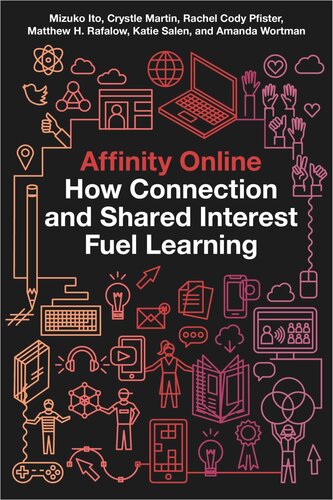

Most ebook files are in PDF format, so you can easily read them using various software such as Foxit Reader or directly on the Google Chrome browser.
Some ebook files are released by publishers in other formats such as .awz, .mobi, .epub, .fb2, etc. You may need to install specific software to read these formats on mobile/PC, such as Calibre.
Please read the tutorial at this link: https://ebookbell.com/faq
We offer FREE conversion to the popular formats you request; however, this may take some time. Therefore, right after payment, please email us, and we will try to provide the service as quickly as possible.
For some exceptional file formats or broken links (if any), please refrain from opening any disputes. Instead, email us first, and we will try to assist within a maximum of 6 hours.
EbookBell Team

4.3
88 reviewsHow online affinity networks expand learning and opportunity for young people
Boyband One Direction fanfiction writers, gamers who solve math problems together, Harry Potter fans who knit for a cause. Across subcultures and geographies, young fans have found each other and formed community online, learning from one another along the way. From these and other in-depth case studies of online affinity networks, Affinity Online considers how young people have found new opportunities for expanded learning in the digital age. These cases reveal the shared characteristics and unique cultures and practices of different online affinity networks, and how they support “connected learning”—learning that brings together youth interests, social activity, and accomplishment in civic, academic, and career relevant arenas. Although involvement in online communities is an established fixture of growing up in the networked age, participation in these spaces show how young people are actively taking up new media for their own engaged learning and social development.
While providing a wealth of positive examples for how the online world provides new opportunities for learning, the book also examines the ways in which these communities still reproduce inequalities based on gender, race, and socioeconomic status. The book concludes with a set of concrete suggestions for how the positive learning opportunities offered by online communities could be made available to more young people, at school and at home. Affinity Online explores how online practices and networks bridge the divide between in-school and out-of-school learning, finding that online affinity networks are creating new spaces of opportunity for realizing the ideals of connected learning.